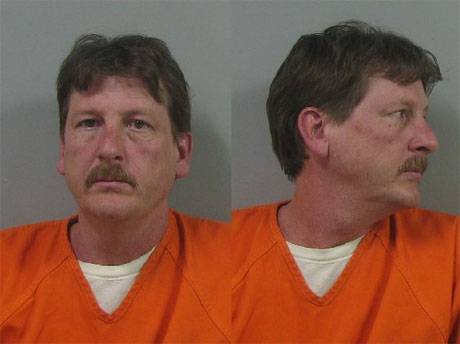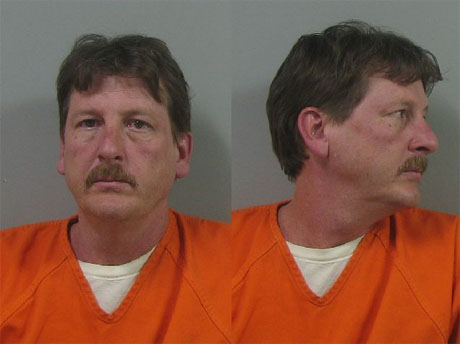Parole Board determined Scott Doll lacked remorse for 2009 murder in Pembroke

Scott F. Doll, convicted in 2010 of murdering his friend Joseph Benaquist on Feb. 16, 2009, in the driveway of Benaquist's home, is insufficiently rehabilitated to be released from prison, the state's Parole Board determined over the summer.
The parole hearing was in June. The Batavian received a transcript this week in response to a Freedom of Information Law request.
"This panel was disturbed when you stated that you knew Joseph Benaquist for many years and did not express any remorse for the loss of his life or the pain and suffering his family has sustained," the determination statement reads.
The panel encourages Doll to continue his rehabilitation efforts so that "you can understand the harm you caused and develop empathy for your victim's family."
After conviction in a jury trial in 2010, Doll was sentenced by Judge Robert C. Noonan to 15 years to life in prison.
Doll has consistently maintained that he did not kill Benquist and maintained his posture of innocence during the hearing.
According to Doll's version of events, he was supposed to meet Benquist at a car auction earlier in the evening of Feb. 16, 2009, and when his friend didn't show, he later went to his house.
"He was laying in a pool of blood," Doll told the panel. "I knelt by him, and I was with him when he took his last breath. I didn't know what to do, and I know I didn't act right because I thought maybe somebody that was close to me was involved in it I lawyered up, and they basically took it from there and convicted me by manipulating the system basically."
Later in the hearing, he said he suspected at the time that his son could have killed Benquist because the two men never got along. He said his son was cleared because he had gone to The Home Depot that evening, and security camera footage from the store confirmed his alibis.
"I just couldn't think of anybody else who would have done it," Doll said in explaining why he suspected his son.
Doll said he didn't render aid to his friend. He didn't attempt CPR and he didn't call authorities for assistance.
Instead of rendering assistance, Doll walked away from the scene.
"I didn't have a destination in mind that I could thin of at the time," Doll told the board. "I was just walking, just trying to get my head around everything that just transpired."
Shortly before 9 p.m. on Feb. 16, 2009, Doll was found by Deputy James Diehl walking on North Lake Road, Pembroke. Doll had what appeared to be blood on his clothing. Later, blood was also found on a vehicle he had been driving. At trial, a blood spatter expert testified the pattern of blood on Doll's clothing and face was consistent with a physical altercation.
The parol board said that Doll's actions that night were an "aggravting factor" in their findings.
Doll was a corrections officer at the time, trained in CPR and how to respond in crisis situations.
"You watched your victim die without attempting to render him any medical assistance," the board states in its ruling. "You stated that you left and just started walking and, in doing so, you thought of yourself and acted in our own self-interest at the expense of your victim's humanity."
The board did commend Doll on his behavior in prison. He has assisted other inmates in earning General Equivalent Deplomas and completed a horticulture training program, which included growing produce for a food pantry program near the Hudson Correctional Facility. He is also a facilitator in the prison's protestant community.
Doll said he's been a member of his church in Corfu for 50 years. He said he hoped the board would see him as a good person.
"My whole life, I've tried to be a good man, and for me to be accused of this, it still -- it's a deep scar with me, deep scar," Doll said. "Every day I walk around, I have officers who look at me like, you know, look at him, and just treat me like dirt sometimes. I always tried to be fair to everybody. I've always lent a helping hand, even in here. I've helped people. I've paid mortgages for people that I've never even met. I just want to help people, and that's just my nature, and that's the way I've lived my life. Whether it was in the fire department, whether it was through the church or the community, I've always stepped up and volunteered for everything."
When asked how he felt about losing a friend, Doll responded, "I've been through a lot of emotions. I feel crushed because of the fact that I am sitting here and that I have not been cleared of this, and that I been accused of killing my friend. I'm devastated. Again, I find it hard to believe in a system that can let somebody manipulate it, you know, like it was done, and that's -- you know, the changing reports was only part of it."
Regarding "changing reports," earlier in the interview, Doll accused former District Attorney Lawrence Friedman of telling deputies to remove statements Doll made from their reports.
Pressed by a member of the board to express remorse, Doll said, "I do, I do feel remorse, and I do feel sorry because, again, there is things that I should have done, and I'm not blameless, and this is as far as I should have done -- I should have come forward and said this is what I think happened, but I didn't. I let them run with the investigation, and, you know, I guess I don't feel 100 percent blameless in this."
In conclusion, the board stated, "Your release at this time would trivialize the tragic loss of life you caused and would, therefore, deprecate the serious nature of this crime as to undermine respect for the law."
For prior coverage of Scott Doll, click here.

